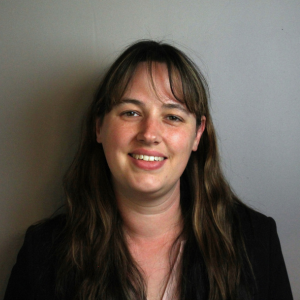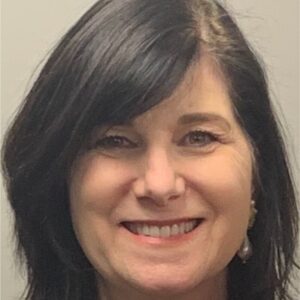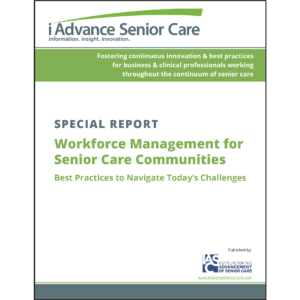How to Handle Difficult Conversations with Families and Residents
Difficult conversations are inevitable in senior care. At some point, staff will need to discuss changing care needs or other sensitive topics with residents and their families. Preparing in advance and approaching these conversations with intention can make them more productive and less emotionally taxing for everyone involved.
Common Mistakes to Avoid During Difficult Conversations

Helena Hitchcox, operations director at Unique Senior Care
It’s easy to fall into certain traps during hard conversations. Helena Hitchcox, operations director at Unique Senior Care, notes that some communities either try to rush through difficult discussions or soften the message so much that the core point becomes unclear. “Families and residents need time to talk things through and deserve honesty without feeling rushed,” she says.
Another common mistake is relying on professional terminology that may be familiar to staff but confusing to families. Plain, direct language helps ensure everyone understands what’s being communicated.
Beth Klint, executive director of Palliative Care and Hospice at Goodwin Living, emphasizes that these conversations should feel personal rather than transactional. Staff may go in with a goal, such as recommending a higher level of care, but focusing too much on the outcome can cause them to miss what the resident and family truly need. “I think it’s really important to understand what the patient or family’s goal is first and letting them kind of set the stage of where they are in the conversation,” says Klint.
Best Practices in Preparing for Difficult Conversations

Beth Klint, executive director of Palliative Care and Hospice at Goodwin Living
Preparation is key in ensuring difficult conversations go as smoothly as possible. Hitchcox stresses the importance of verifying that all staff involved understand the resident’s background, concerns, and likely questions before the discussion begins. Staff should anticipate the questions or emotions that might come up, and be prepared to explain things clearly and compassionately. “It often works best when the Care Manager leads, with support from the caregiver who knows the person best,” she says.
Klint encourages senior care teams to give residents and families as much control over planning as possible so the conversation feels collaborative. For example, hold the meeting in a space where the resident is most comfortable. For some, that might be in their room so they don’t have to sit in a wheelchair for long. “Ask [the resident] where they would like to have the meeting and who from their family they would like to be present,” recommends Klint. She also lets families know which staff members will attend, while keeping the group balanced, so families don’t feel outnumbered.
The physical setup matters as well. Choose a space that allows staff to be at eye level with the resident, and arrange the environment to reinforce a sense of teamwork and shared purpose.
Klint also highlights the importance of being fully present during the conversation. She recommends staff leave their phone outside or turn it off, and disable smartwatch notifications to avoid distraction, so you can truly focus on the people in the meeting.
She also recommends scheduling more time than needed for a meeting. Avoid lining up another appointment immediately afterward, so there’s no pressure to end the meeting prematurely. “If you’re trying to get [the conversation] done, you won’t be able to actively listen and it will affect the way you approach the conversation,” she says.
Strategies for Navigating Strong Emotional Reactions
When emotions run high, acknowledging them early can help de-escalate tension. “A simple phrase like ‘I can see this is difficult’ can make people feel understood,” Hitchcox explains. “Silence can be powerful, too. Giving someone time to think or cry without interruption shows respect.” Staff should also be aware of their own body language and tone, maintaining a calm voice and an open posture to create a sense of safety.
Klint advises staff to allow space for emotions and begin by understanding what matters most to the resident. Asking open-ended questions in the beginning, like what concerns they have and how they feel about the situation, helps staff understand where the resident is emotionally. “Let them tell you where they are,” recommends Klint. “If you skip that step, you cut them out and you could walk into something that you didn’t see coming that makes everybody upset. You’ve lost the ability to have a collaborative conversation.”
When strong emotions surface, Klint suggests pausing, offering a tissue, and giving the person time. Then, resume gently: “I see this has made you emotional; can you tell me more about that?”
Conversations can wander, especially when emotions run high. To bring the conversation back on track, Hitchcox recommends summarizing what’s been said and refocusing on the central issue. She adds that it’s helpful to acknowledge new concerns and offer to address them separately. If the conversation becomes too tense, suggest taking a break and resuming the conversation later.
How to Conclude a Conversation
At the end of a conversation, Klint recommends clearly identifying the goal and the steps needed to achieve it. “You want to say exactly what it is that you’ve established to help the patient meet their goals, and assign the responsible parties for the next steps in the process,” she says.
Always follow up with an email to the people in the meeting that summarizes the goals and responsibilities of each person. This ensures everyone is aligned, and any additional staff members who join later can easily understand what was decided.
Even with careful planning, difficult conversations remain challenging, and mistakes will happen. However, mistakes are also valuable learning opportunities, and Klint encourages staff to view missteps as opportunities to grow. “If someone gets upset at you, it’s ok to say, ‘I’m sorry, I didn’t mean to make you feel upset. I’m trying to help you, but I want to say thank you ‑ you’ve taught me something and I’ll be aware of that in the future.’” She adds, “That goes a long way.”

Paige Cerulli is a contributing writer to i Advance Senior Care.
Related Articles
Topics: Communication , Facility management , Featured Articles , Leadership , Operations , Training












